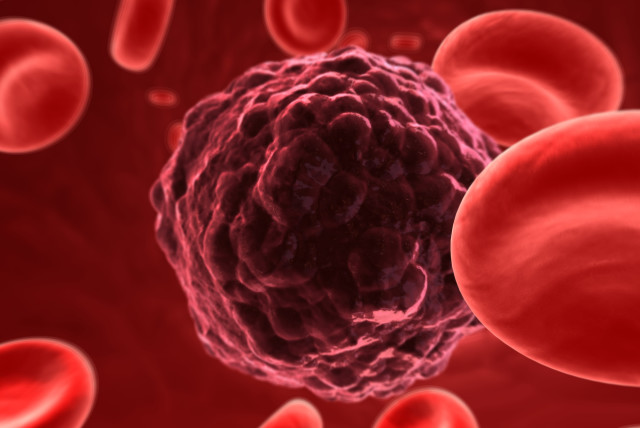Fantastic Voyage of nanorobots in mouse bladders defeat cancerous tumors by 90%
A promising alternative involves the use of nanoparticles capable of delivering therapeutic agents directly to the tumor.
A new study published in the prestigious journal Nature Nanotechnology under the title “Urease-powered nanobots for radionuclide bladder cancer therapy” reveals how a research team successfully reduced the size of bladder tumors in mice by 90% through a single dose of urea-powered nanorobots.
Moviegoers were enthralled by the 1966 sci-fi film Fantastic Voyage, whose outstanding special effects were used to simulate a journey through the human body. It’s not science fiction anymore.
Research on mice led by scientists at Spain’s Institute for Bioengineering of Catalonia shows how these tiny nanomachines are propelled by urea present in urine and precisely target the tumor, attacking it with a radioisotope carried on their backs.
Bladder cancer has one of the highest incidence rates in the world and ranks as the fourth most common tumor in men. Despite its relatively low mortality rate, nearly half of bladder tumors reappear within five years, requiring ongoing patient monitoring. Frequent hospital visits and the need for repeat treatments contribute to making this type of cancer one of the most expensive to cure.
While current treatments involving direct drug administration into the bladder show good survival rates, their therapeutic efficacy remains low. A promising alternative involves the use of nanoparticles capable of delivering therapeutic agents directly to the tumor – especially nanorobots or nanoparticles endowed with the ability to self-propel within the body.
These tiny nanomachines consist of a porous sphere made of silica. Their surfaces carry various components with specific functions, including the enzyme urease – a protein that reacts with urea found in urine, enabling the nanoparticle to propel itself. Another crucial component is radioactive iodine, a radioisotope commonly used for the localized treatment of tumors.
The results indicate a promising new potential tumor treatment
The research, carried out in collaboration with the vBA Institute for Research in Biomedicine in Barcelona (IRB) and the Autonomous University of Barcelona, paves the way for innovative bladder cancer treatments that aim to reduce the length of hospitalization, thereby costing less and providing enhanced comfort for patients.
“With a single dose, we observed a 90% decrease in tumor volume. This is significantly more efficient given that patients with this type of tumor typically have six to 14 hospital appointments with current treatments. Such a treatment approach would enhance efficiency, reducing the length of hospitalization and treatment costs,” explained Prof. Samuel Sánchez of the Catalonia Institute and leader of the study. The next step, which is already underway, is to determine whether these tumors recur after treatment.
In previous research, the scientists confirmed that the self-propulsion capacity of nanorobots allowed them to reach all bladder walls. This feature is much better than the current procedure in which, after administering treatment directly into the bladder, the patient must change position every half hour to ensure that the drug reaches all the walls.
This new study goes further by showing not only the mobility of nanoparticles in the bladder but also their specific accumulation in the tumor. This achievement was made possible by various techniques, including medical positron emission tomography (PET) imaging of the mice and microscopy images of the tissues removed after completion of the study. The latter were captured using a fluorescence microscopy system developed specifically for this project at IRB Barcelona. The system scans the different layers of the bladder and provides a 3D reconstruction, thereby enabling observation of the entire organ.
“The innovative optical system that we have developed made it possible for us to eliminate the light reflected by the tumor itself, allowing us to identify and locate nanoparticles throughout the organ without prior labeling at an unprecedented resolution. We observed that the nanorobots not only reached the tumor but also entered it, thereby enhancing the action of the radiopharmaceutical,” explains Julien Colombelli, leader of the advanced digital microscopy platform at IRB Barcelona.
Understanding why nanorobots can enter the tumor poses a challenge because they lack specific antibodies to recognize the tumor, and tumor tissue is typically stiffer than healthy tissue. “But we saw that these nanorobots can break down the extracellular matrix of the tumor by locally increasing the pH through a self-propelling chemical reaction. This phenomenon favored greater tumor penetration and was beneficial in achieving preferential accumulation in the tumor,” explained Meritxell Serra Casablancas, co-first author of the study and IBECresearcher.
The team concluded that the nanorobots collide with the urothelium as if it were a wall, but in the tumor, which is spongier, they penetrate the cancerous growth and accumulate inside. A key factor is the mobility of the nanorobots, which increases the likelihood of reaching the tumor. Our results open the door to the use of other radioisotopes with a greater capacity to induce therapeutic effects but whose use is restricted when administered systemically.”
Jerusalem Post Store
`; document.getElementById("linkPremium").innerHTML = cont; var divWithLink = document.getElementById("premium-link"); if (divWithLink !== null && divWithLink !== 'undefined') { divWithLink.style.border = "solid 1px #cb0f3e"; divWithLink.style.textAlign = "center"; divWithLink.style.marginBottom = "15px"; divWithLink.style.marginTop = "15px"; divWithLink.style.width = "100%"; divWithLink.style.backgroundColor = "#122952"; divWithLink.style.color = "#ffffff"; divWithLink.style.lineHeight = "1.5"; } } (function (v, i) { });

